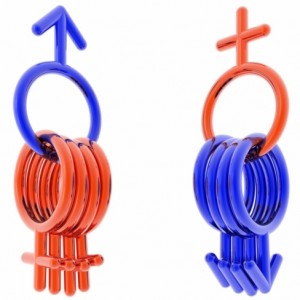World News – Do you ever wonder why the world’s oldest profession has flourished all these years…..perhaps it is because being with one person for the rest of your life is not natural. This is why many men come to Costa Rica as a release of their sexual desires with a working girl.
 Kristen Stewart, Ryan Phillippe, LeAnn Rimes, Jude Law, Mark Sanford and Bill Clinton. What do they have in common?
Kristen Stewart, Ryan Phillippe, LeAnn Rimes, Jude Law, Mark Sanford and Bill Clinton. What do they have in common?
Many are quick to label a person who strays from his or her marriage or relationship as a “cheater,” but it’s really not that simple. It’s time for our culture to wake up and smell the sex pheromones: monogamy is not natural for many, or probably even most, humans.
With people living longer than ever before, a greater tolerance toward the human impulse to experience sexual variety is needed. Whether a person succeeds at being sexually monogamous depends as much on biology as environment.
History and biology suggest that strict monogamy, which has social advantages, is not a “one size” fits all proposition.
The rise of the love marriage
Marrying for love is a relatively new concept. Beginning with Enlightenment — the cultural movement of the 18th and 19th centuries — when the pursuit of happiness became a legitimate human pursuit, marrying for love slowly but surely became an aspiration in the Western world.
But for most of human history, marriage was primarily a socioeconomic transaction. Spending the rest of your life with someone was more about the protection of property and the sharing of labor than it was about romance.
The side effect of the rise of marriage as a romantic proposition was that sexual jealousy became a more prevalent ingredient in marriage than it had been previously. Over time, sexual fidelity has come to be regarded as the barometer of a successful marriage — regardless of what science tells us about natural human inclinations.
Lovebirds Cheat
Biologically, we humans are animals. So it makes sense to look to the animal kingdom for clues as to what we are built for. Let’s start with birds. For some time, bird species such as lovebirds and penguins were celebrated among humans for their seemingly monogamous ways. About 90% of birds were thought to be strictly monogamous.
built for. Let’s start with birds. For some time, bird species such as lovebirds and penguins were celebrated among humans for their seemingly monogamous ways. About 90% of birds were thought to be strictly monogamous.
But DNA fingerprinting knocked birds off the monogamy perch. Analysis of avian DNA indicates that many nestlings’ fathers are not their biological fathers.
This led experts to distinguish between unions that are sexually exclusive and those that are socially monogamous — meaning a pair that raises a family together but indulges in what are called “extra pair copulations.”
“Faithless pairing” is the Norm
The evidence shows that monogamy is a rarity among mammals. Only 3% to 5% of all the mammal species on Earth “practice any form of monogamy.” In fact, no mammal species has been proven to be truly monogamous.
One species, the prairie vole was subjected to scrutiny by biologists because it appeared to be truly monogamous. But it turns out that as a species, it just has a very high rate of sexual monogamy. Not every prairie vole resists straying.
Studies of prairie voles helped scientists understand that from a chemical and biological standpoint, sexual monogamy depends not just on particular hormones that are released in the brain, but on receptors for these hormones.
 Among humans, here’s the rub: we have the chemicals and the receptors, but it varies from person to person how much we have. Based on brain wiring alone, inclination toward fidelity can vary dramatically from one individual to another.
Among humans, here’s the rub: we have the chemicals and the receptors, but it varies from person to person how much we have. Based on brain wiring alone, inclination toward fidelity can vary dramatically from one individual to another.
In other words, “once a cheater, always a cheater,” might have as much to do with brain wiring as with a person’s moral compass, upbringing or culture.
The bottom line is that flings are far from folly, at least in the animal kingdom. Even swans — symbols of fidelity — are not immune.
One Partner for 50 years?
It’s also important to look at human longevity with respect to cultural expectations of monogamy.
As recent as over 100 years ago, it was far more likely that an individual would lose his or her spouse at a young age. Remarriage by widows and widowers — also known as serial monogamy — was one way for humans to fulfill the need for sexual variety.
Today, the median age for first marriages is 28 for men and 26 for women. Disease is far less likely to kill someone in their prime and life expectancy hovers in the late 70s.
Because fidelity is considered the barometer of a successful marriage, this means that a person is theoretically expected to have one sexual partner for about 50 years.
This seems like a lot to expect of any human being — even the most honorable, ethical and moral.
Those who are able to stay with one partner for a long haul are sometimes looked upon with awe. Certainly, a lasting and happy marriage tends to be far better for the children.
It has long been assumed that men struggle more with monogamy than women. Some experts have started to question this theory. With the development of a drug that promises to boost female libido, one can argue that sexual boredom and the temptation to stray is as big of an issue for women as it is for men, if not more so.
Human monogamy is influenced by many factors. Instead of pointing fingers or acting morally superior toward those who stray from marriages, we should recognize that strict sexual fidelity is a lofty but perhaps fundamentally doomed aspiration.
No two individuals, and no two couples are alike, and we should respect that.
Moreover, one’s perspective on monogamy is not necessarily an indicator of one’s personal practices. Many people have incorrectly assumed that because I’ve read, thought, and written about the problems with human monogamy that I am myself promiscuous.
For the record, nothing could be further from the truth. Nor am I, as many commenters on this Yahoo post suggested, a Satanist or a whore.
I am just a woman with a healthy respect for science.
By Meghan Laslocky, Special to CNN, Edited by Dan Stevens

